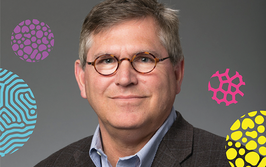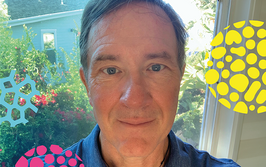
The Wish List: Spectroscopy
What are the biggest research priorities in spectroscopy today?
Nicoló Omenetto, Rick Russo, Frank Bright, Jorge Pisonero Castro, Ron M. A. Heeren, R. Graham Cooks, Gary Hieftje, Kay Niemax, Leslie Hicks | | Opinion
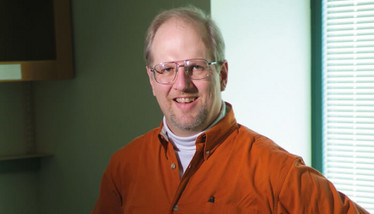
“Top of my wish list would be turnkey ultrafast laser systems. Studying dynamics in systems ranging from molecular movement in macromolecular systems to electron dynamics within molecules (and even photo-ionization) requires the ability to detect phenomena over shorter and shorter time scales. Thirty to forty years ago picosecond measurements were just becoming routine. Today, there are numerous turnkey femtosecond systems used by scientists who are not hardcore ‘laser spectroscopists.’ My wish is for a turnkey attosecond laser system that would allow a wide array of researchers to study complex system electron dynamics. Next year, I’ll wish for the zeptosecond version!”
Frank Bright, Frank Bright, Henry M. Woodburn Chair and SUNY Distinguished Professor, Department of Chemistry, University at Buffalo, USA
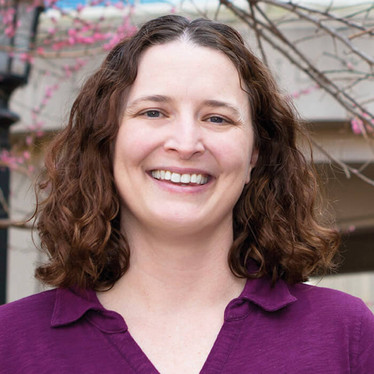
"Recent advances in mass spectrometry allow for rapid and efficient fragmentation of naturally-occurring cyclic peptides in the gas phase (UVPD fragmentation); however, our ability to determine the sequence of these mass species is hampered by the difficulty of interpreting the MS/MS spectra. On my wish list, I would like to see advanced algorithms that can help us to sequence these highly complex MS/MS spectra, by reducing the redundancy of sequence coverage normally generated via fragmentation of cyclic species with multiple points of cleavage. To the same end, selective cleavage of specific bonds/residues in the gas phase could alleviate MS/MS complexity and enable the rapid sequence determination needed to characterize these interesting cyclic peptides."
Leslie Hicks, Assistant Professor, University of North Carolina, Chapel Hill, USA.
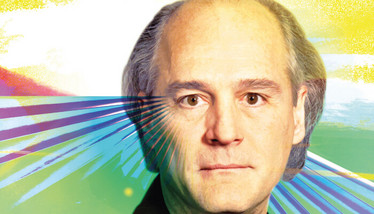
“After devoting almost 40 years to laser ablation (LA) for chemical analysis, I’d like to see a true direct solid sample analysis instrument – not laser ablation hooked up to an ICP, but an instrument that is specific to solid sample analysis. LA with ICP (OES, MS) and LIBS has advanced considerably over the decades and there are many early adopters at universities and research laboratories who are using the technology successfully. However, for industry use we need a turnkey instrument that can be operated by technicians and is amenable to easy methods development, access to appropriate standards, database libraries, and machine learning tools to complement rapid direct solid sample chemical imaging and analysis.”
Rick Russo, Senior Scientist, Lawrence Berkeley National Laboratory, California, USA.
“I would like to see a new generation of detectors for mass spectrometry (for example, arrays) able to simultaneously detect ions from a large mass to charge interval, with high sensitivity, high mass resolution and with a large dynamic range. In this way, technology such as distance of flight (DoF)-MS or multi-collector(MC)- MS could have a big impact in multiple applications – specifically, analysis of multielemental nanoparticles/quantum dots, multi-elemental imaging, and determination of multi-elemental isotopic ratios.”
Jorge Pisonero Castro, Associate Professor, Department of Physics, University of Oviedo, Spain.
“My greatest wish is not for technological advances, but rather that scientists get more freedom in research – and less nannying by the state, administration, and interest groups. I believe the scope to follow our own ideas would do much to open new fields of research and accelerate progress in science. Focusing on analytical spectroscopy, I would like to see more work using laser spectroscopy. Tunable lasers showed their tremendous capabilities in basic atomic and molecular physics more than 30 years ago, but remain underused in analytical spectroscopy. Extremely high detection powers have been demonstrated in absorption as well as fluorescence measurements; moreover, laser spectroscopy offers the possibility to apply sub-Doppler high-resolution spectroscopy. The use of different Doppler-free detection techniques would not only be of interest for high-precision isotope ratio measurements of atoms and molecules, but also for the application of isotope dilution for matrix-independent accurate concentration measurements.”
Kay Niemax, Emeritus Professor of Physics, Technical University of Dortmund, Wilhelm-Ostwald-Fellow of the Federal Institute for Materials Research and Testing, Berlin, Germany
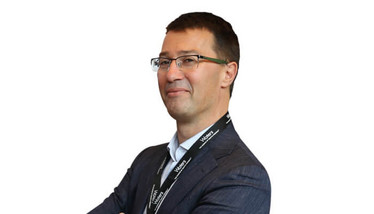
“I would like to see further and easier data integration. It has become possible to rapidly generate large and detailed sets of molecular data with a variety of ‘spectro’ tools on identical samples. Yet, most analytical scientists seem to struggle with data fusion and lack the ability to turn data into reliable answers to their analytical problems. New innovative and integrative software tools are badly needed.”
Ron Heeren, Director of Maastricht MultiModal Molecular Imaging Institute (M4I), Distinguished Professor and Limburg Chair at Maastricht University, the Netherlands.
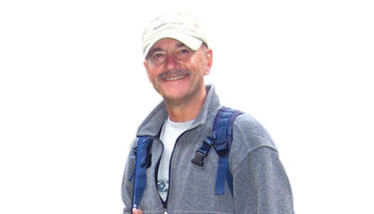
“There are a number of developments I would like to see in the field, including:
- A broadly tunable narrow-band UV-Vis laser. This would provide greater selectivity in fundamental molecular spectroscopy and make multi-element analysis by atomic absorption, atomic fluorescence, and laser-enhanced ionization spectroscopies possible.
- A micro or nano optical spectrometer based on molecular filters. This would simplify remote, unattended analysis, new generations of highselectivity optical sensors, and possibly implantable optical spectrometers.
- An ICP replacement with little or no argon consumption, low power requirement (less than 100W), and no matrix interferences to allow ICPAES and possibly ICP-MS in unattended, remote operations.
- A low-cost multichannel ion or electron detector (analogous to a charge coupled device, CCD), which would provide ‘all the signal, all the time.’
- A field-compatible mass spectrometer. Once widely available, such devices could transfer many laboratory massspectrometric measurements to the plant, physician’s office, or field.
- A glow-discharge emission or mass spectrometer that offers both depth-resolved and surface-resolved elemental concentrations, offering many of the advantages of secondary-ion mass spectrometry (SIMS) but at lower cost and greater speed.
- A source for ambient desorption/ ionization mass spectrometry (ADI-MS) that is free from matrix interferences and offers accurate quantification information.”
Gary Hieftje, Distinguished Professor Emeritus, Mann Chair in Chemistry, Indiana University, Indiana, USA
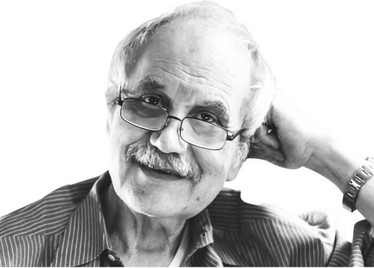
“On the instrument side, I would like to see more hybrid developments of LIBS with other instrumental approaches (Raman– Fluorescence–Absorption, TOF–MS). Such instruments take advantage of the differing information capabilities of each technique, allowing the near-complete characterization of the sample. In data treatment, I would welcome a universally accepted, pitfall-free, chemometric protocol, responding to the different analytical problems encountered with different types of samples. On the fundamental side, I would like to see increased attention and effort devoted to the absolute calibration of the instrument, from sample to signal (ions or photons). It’s a huge challenge, but even small steps forward will be beneficial.”
Nicoló Omenetto, Research Professor, Department of Chemistry, University of Florida, USA.
On a lighter note...
“A wearable ion mobility spectrometer – so that when going shopping one can detect the artificial scents to which businesses increasingly expose their customers and know when to don protective gear!”
R. Graham Cooks, Henry B. Hass Distinguished Professor, Chemistry, Purdue University, Indiana, USA.
Rick Russo has studied the fundamental properties of laser material interactions and related applications for over 30 years. He received a BS degree in Chemistry from the University of Florida in 1976 and a PhD in Chemistry from Indiana University in 1981, where he also completed his postdoctoral studies. Since 1982, he has held various positions at the Lawrence Berkeley National Laboratory in Berkeley, California, where he is currently a Senior Scientist. His research has included: fundamental studies of laser heating and laser ablation processes; improved chemical analysis using laser ablation; fiber sensors for monitoring organic and radioactive species in groundwater; Raman, fluorescence, and photothermal spectroscopy of rare-earth and actinide ions. He is co-inventor of the ion-assisted pulsed laser deposition (IBAD) and ion-texturing (ITEX) processes, and holds the world record for the highest critical current density (Jc) HTSC film on polycrystalline substrate. Rick is co-discoverer of the nanowire laser, highlighted by a Science article and patent application in 2002. Rick is also CEO and founder of Applied Spectra.
Henry M. Woodburn Chair and SUNY Distinguished Professor, Department of Chemistry, University at Buffalo, New York.
Jorge Pisonero is an Associate Professor of Physics (since 2012) at University of Oviedo (Spain), from which he obtained his PhD degree (November 2004) working on glow discharge spectroscopy. After his PhD, he was awarded a 2-year Marie Curie Intra-European Fellowship for a postdoctoral stay at ETH (Switzerland) to work on laser ablation-based techniques. Afterwards, Jorge obtained the prestigious “Ramon and Cajal” research contract and went back to University of Oviedo, where in collaboration with Dr Nerea Bordel established the Laser and Plasma Spectroscopy Research Group (www.unioviedo.es/gelp). His current research interests are focused on fundamentals and applications of atmospheric and low pressure GD spectroscopies, LIBS and LA-ICP-MS. Moreover, Jorge is co-author of more than 60 scientific articles and several book chapters.
Director, M4I, and Distinguished Professor, University of Maastricht, Netherlands
Henry Bohn Hass Distinguished Professor of Chemistry, Aston Laboratory of Mass Spectrometry, Purdue University, USA.
Gary Hieftje is distinguished professor and Robert & Marjorie Mann chair at the Department of Chemistry, School of Public and Environmental Affairs, and School of Informatics, Indiana University Bloomington, USA. Gary’s research interests include the investigation of basic mechanisms in atomic emission, absorption, fluorescence and mass spectrometric analysis, the development of instrumentation and techniques for atomic methods of analysis, on-line computer control, the use of time-resolved luminescence processes, and the use of stochastic processes to extract basic and kinetic chemical information.
Emeritus Professor of Physics, Technical University of Dortmund, Wilhelm-Ostwald-Fellow of the Federal Institute for Materials Research and Testing, Berlin, Germany
Assistant Professor, University of North Carolina, Chapel Hill, USA.


